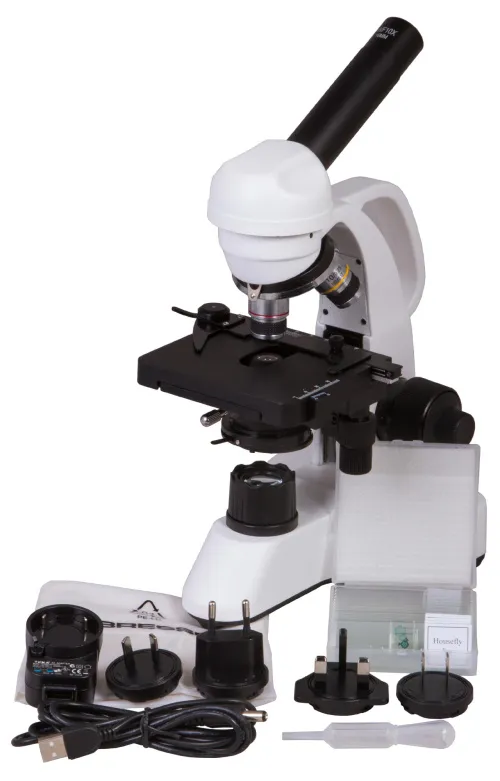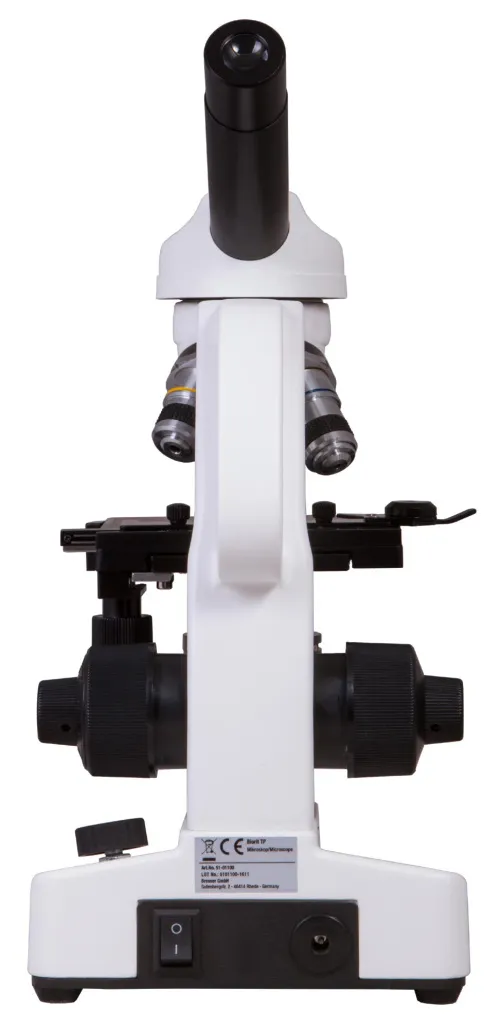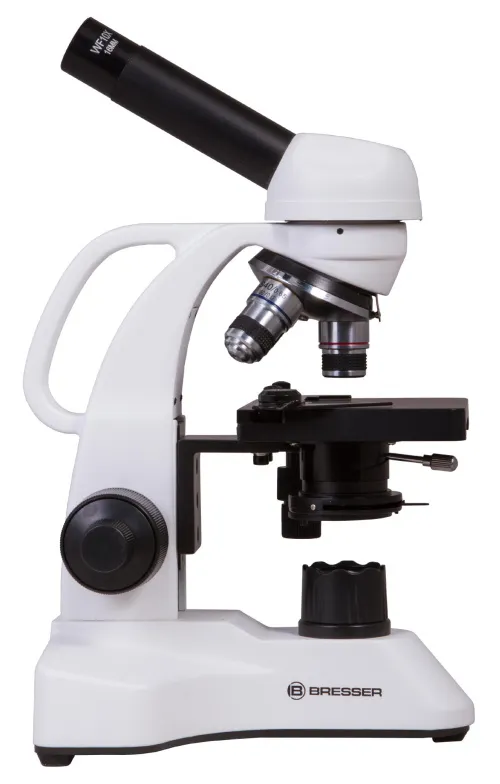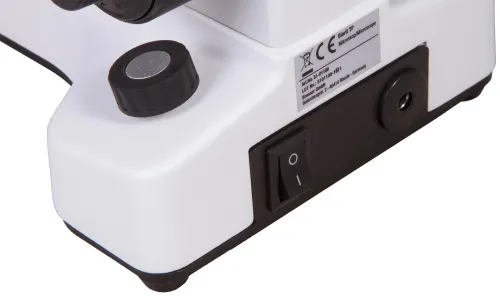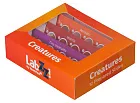Bresser Biorit TP 40–400x Microscope
For brightfield observations. Magnification: 40–400x. Monocular
| Product ID | 73760 |
| Brand | Bresser GmbH, Germany |
| Warranty | 2 years |
| EAN | 4007922038780 |
| Package size (LxWxH) | 38x31x19 cm |
| Shipping Weight | 3.04 kg |
The Bresser Biorit TP is a compact but high-quality microscope for schools and universities with many possible applications. Also suitable for mobile use because of the integrated rechargeable battery! The dimmable LED illumination of the Biorit TP and a vertically adjustable condenser (with iris diaphragm and filter holder) enable perfect lighting. Achromatic DIN-objectives provide superb images without distortion. The 40x-objective is spring secured to prevent damage to your object plate. The microscope features a 360° rotating monocular insight, a coarse- and fine focus as well as a coaxial cross table with vernier scale.
Features:
- Type: biological microscope
- Viewing: monocular
- Areas of application: biology, botany, education
- Illumination: LED, vertically adjustable condensor
- Target group: beginner, intermediate
- Extra: built-in rechargeable battery
- Coaxial cross table
- Intergrated dimmer
The kit includes:
- Microscope
- 10x magnification eyepiece
- 3x objectives (4x, 10x, 40x)
- Abbe condenser with iris diaphragm and filter holder
- USB power cable
- User manual
| Product ID | 73760 |
| Brand | Bresser GmbH, Germany |
| Warranty | 2 years |
| EAN | 4007922038780 |
| Package size (LxWxH) | 38x31x19 cm |
| Shipping Weight | 3.04 kg |
| Type | biological, light/optical |
| Microscope head type | monocular |
| Head | 360 ° rotatable |
| Magnification, x | 40 — 400 |
| Eyepieces | 10x |
| Objectives | 4x, 10x, 40x (achromat DIN standard) |
| Revolving nosepiece | for 3 objectives |
| Stage features | mechanical, two-axis, with a measuring scale, with a mechanical stage |
| Condenser | Abbe condenser N.A. 1.25 with an iris diaphragm and filter holder, with adjustable height |
| Diaphragm | iris |
| Focus | coaxial; coarse and fine |
| Body | aluminum |
| Illumination | LED |
| Brightness adjustment | ✓ |
| Power supply | AC network, built-in battery |
| User level | beginners |
| Application | school/educational |
| Illumination location | lower |
| Research method | bright field |
We have gathered answers to the most frequently asked questions to help you sort things out
Find out why studying eyes under a microscope is entertaining; how insects’ and arachnids’ eyes differ and what the best way is to observe such an interesting specimen
Read this review to learn how to observe human hair, what different hair looks like under a microscope and what magnification is required for observations
Learn what a numerical aperture is and how to choose a suitable objective lens for your microscope here
Learn what a spider looks like under microscope, when the best time is to take photos of it, how to study it properly at magnification and more interesting facts about observing insects and arachnids
This review for beginner explorers of the micro world introduces you to the optical, illuminating and mechanical parts of a microscope and their functions
Short article about Paramecium caudatum - a microorganism that is interesting to observe through any microscope


